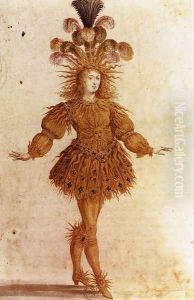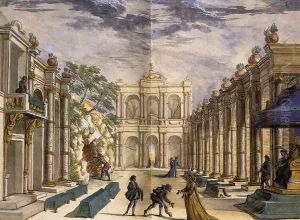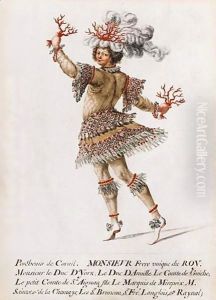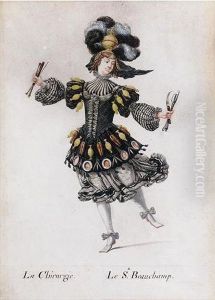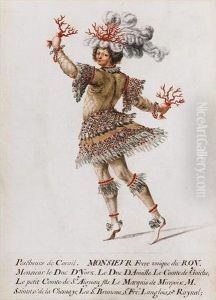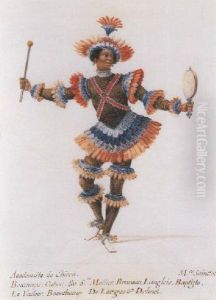Henri Gissey Paintings
Henri Gissey was a French artist and designer, born in 1621 and passing away in 1673, who played a significant role in the development of Baroque style in France during the 17th century. His work is particularly noted for its influence on costume design and the decorative arts within the context of the French court, especially during the reign of Louis XIV, also known as the Sun King. Gissey's career was primarily dedicated to serving the royal court, where he held the prestigious position of Dessinateur de la Chambre et du Cabinet du Roi, essentially acting as a chief designer for the king.
Throughout his career, Gissey was deeply involved in the orchestration and design of court festivities, ballets, and ceremonies, which were integral to Louis XIV's strategy of using the arts as a means of political expression and control. One of his most celebrated contributions was to the visual spectacle of these events, where his designs for costumes and scenery helped elevate them to unprecedented levels of magnificence. Gissey's work was characterized by intricate detail, innovative use of color, and the incorporation of symbolic elements that reflected the grandeur and absolute power of the monarchy.
Beyond his contributions to court festivities, Gissey's influence extended to the broader realm of French artistic development. His designs and ideas helped shape the aesthetic direction of the Baroque movement in France, contributing to a visual culture that emphasized opulence, dynamism, and a harmonious blend of the arts. His legacy, however, is most palpably preserved in the detailed engravings and drawings he left behind, which continue to offer invaluable insights into the artistic and cultural priorities of the French court during one of its most flamboyant periods.
Despite his significant contributions, Henri Gissey is not as widely recognized today as some of his contemporaries, such as Charles Le Brun or André Le Nôtre, who also served Louis XIV and have since overshadowed Gissey in the historical record. Nevertheless, for those who study the evolution of costume design and the spectacle of the royal court in 17th-century France, Gissey's work remains a pivotal reference point. His ability to merge artistic skill with the demands of courtly representation and spectacle has cemented his place in the history of French art and design.
